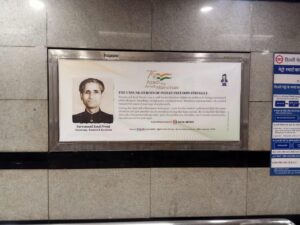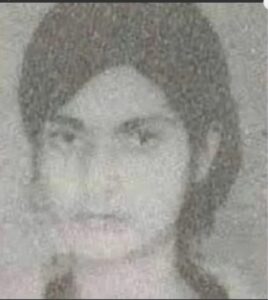1986 Anantnag Riots
Kashmir’s 1986 Anantnag Riots represent a deeply troubling and often ignored period in the recent history of Kashmir. These events, occurring several years before the widespread displacement which caused the final Exodus of Kashmiri Pandits in 1990, marked the initial instance of organised violence aimed at the Kashmiri Pandit community.
They weren’t random outbursts.
They were a warning.
These riots marked the first large-scale, organised violence targeting the Kashmiri Pandit community, setting the stage for the tragic displacement of 1990.
What happened wasn’t accidental.
Politics, power, and polarisation engineered it.
Political Machinations of 1986: Anantnag Riots
It all began on 2nd July 1984.
A political coup unfolded in silence.
Ghulam Mohammad Shah (Gul Shah) engineered a dramatic power shift, convincing 12 MLAs from the National Conference to defect, toppling Farooq Abdullah, his own brother-in-law.
This power grab wasn’t just a betrayal. It was the beginning of governance collapse in Kashmir.
Shah’s twenty-month tenure as Chief Minister was marked by unprecedented levels of lawlessness, earning him the ironic nickname “Gul Curfew” due to the exceptionally high number of days under curfew enforced during his problematic rule.
The machinery of the state became increasingly divided along religious lines under his leadership. Systemic corruption and a breakdown in administration created an environment ripe for the outbreak of sectarian violence.
The immediate trigger for the riots occurred in early 1986 when Shah declared his intention to build a mosque within the grounds of the Jammu Civil Secretariat, specifically on the site of a historically significant Hindu temple.
This provocative announcement ignited widespread protests across Jammu, where the Hindu population strongly opposed what they perceived as a sectarian action designed to appeal to Muslim voters.

International and National Confluences of 1986 Anantnag Riots
The disturbances of 1986 unfolded within a complex backdrop of both international and national events that fostered an atmosphere of religious tension. The reported desecration of the Al-Aqsa Mosque in Jerusalem on 3rd February 1986 had already generated considerable resentment among the Muslim population of Kashmir.
At the same time, the opening of the gates of the Babri Masjid on 1st February 1986, following a district court order in Faizabad, further inflamed religious sentiments throughout the Indian subcontinent.
This judicial decision was part of a deliberate political strategy by the government of Rajiv Gandhi, which was viewed by some as an attempt to appease Hindu sentiments following the government’s controversial reversal of the Shah Bano judgment.
The opening of the Babri Masjid had far-reaching consequences across India, contributing to the increasing politicisation of religious identity and setting precedents for religious mobilisation that would have repercussions in Kashmir.
Understanding the Context of the 1986 Anantnag Riots
When Gul Shah arrived in Srinagar, he uttered a chilling phrase:
“Islam khatre mein hain.”
(Islam is in danger.)
That sentence travelled faster than fire. The date was 20th February 1986.
This incendiary pronouncement, coming from the highest office in the state, was intentionally crafted to stir up Muslim sentiment and divert attention from the growing protests in Jammu. The impact was immediate and devastating.
Riots exploded the same day in Wanpoh village, Anantnag district.
Then it spread to Dayalgam, Luk Bhawan, Salar, Fatehpur, and Sopore.
On the very first day of the violence, several temples in the villages of Wanpoh, Dayalgam, and Luk Bhawan were deliberately set on fire.
According to eyewitnesses, a group of unidentified Kashmiri women travelling from Jammu stopped in Wanpoh and displayed their torn clothing to gathered crowds, claiming they had been mistreated. This incident served as the immediate catalyst for attacks on the homes of Kashmiri Pandits.
Systematic Destruction Caused in 1986 Anantnag Riots
The scale of destruction during the 1986 Anantnag Riots was unprecedented in the modern history of Kashmir.
According to records from the Home Ministry, thirty-six temples were attacked during 1986 alone. The violence destroyed approximately three hundred houses belonging to Pandits, along with numerous temples and business premises. In Wanpoh village itself, eleven houses were set ablaze, five were looted, and attempts were made to damage fourteen temples.
The systematic nature of the attacks is evident from detailed records of targeted locations. In the Anantnag district alone, temples in Wanpoh, Sarnal, Nai Basti, Aishmuqam, Dhanbogund, Navgam, and Achhabal were subjected to arson and vandalism.
In Srinagar, temples in Ganpatyar, Maisuma, Jawaharnagar, Karan Nagar, and near the Secretariat were similarly targeted.
The historic Akhara Building Complex in Srinagar was also engulfed in flames during the riots. The violence persisted even after the Maha Shivratri festival on 8th March 1986, extending to other districts, including Pulwama, Tral, Sopore, and Baramulla.
Perhaps most disturbingly, there was evidence of administrative complicity in the violence. On 27th February 1986, both the Deputy Commissioner and the Superintendent of Police of Anantnag were suspended for neglecting their duties. Furthermore, nine government officials, predominantly teachers, were dismissed from their positions for actively assisting the rioters.
These dismissed officials included Professors Ghulam Rasool Bacha, Ashraf Saraf, Ghulam Nabi Bhat, Abdul Karim Kimarni from Baramulla, Abdul Khaliq Sofi and Bashir Ahmad Sofi from Ganderbal, Engineer Ghulam Hassan Mir from Sopore, M Amin Dar from Doabgah, and Abdul Salam Kumhar from Redwani.
The extent of bureaucratic involvement became apparent when local residents in Anantnag staged a complete hartal (strike) in protest against the suspension of these officials, revealing the significant level of community support for the violence.
Military Intervention and Political Consequences
The scale of the violence necessitated the deployment of the Indian Army with “shoot-on-sight” orders to restore order. The gravity of the situation ultimately led to the dismissal of Gul Shah’s government on 7th March 1986, with Governor Jagmohan assuming direct administrative control of the state.
Jagmohan’s intervention was widely credited with re-establishing law and order. The dismissal of Shah’s government marked the second instance of Governor’s Rule being imposed in Jammu and Kashmir, underscoring the persistent political instability that had become a characteristic feature of the region.
Cover-up Operations and Denial of Justice
The state government’s response to the riots was characterised by significant attempts to cover up the events rather than conducting genuine investigations or delivering justice.
Despite clear indications of organised violence and substantial destruction of property, no meaningful legal prosecutions followed. Many of the destroyed temples were never rebuilt through government initiatives, leaving the Kashmiri Pandit community to undertake their restoration using their own resources.
The effort to downplay the significance of the events extended to official records, with local administrations in Anantnag initially dismissing the violence as exaggerated or fabricated.
This pattern of institutional denial would later become a characteristic feature of the state’s response to violence directed against the Pandit community.
The Warning Signs and Community Response
The communal riots of Anantnag in 1986 acted as a clear and worrying indication of the increasing, organised mistreatment that the Kashmiri Pandit community would face in the years that followed.
Immediately after these disturbances, many Pandit families, recognising that the security situation was becoming increasingly dangerous for them, began to purchase homes and land in safer areas of Jammu, including places such as Chinore, Bantalab, and Tope Sherkhania. This action demonstrated their growing fear for their safety and future in their ancestral homeland.
The riots demonstrated the alarming speed with which centuries of communal coexistence could be shattered through political manipulation and the mobilisation of religious sentiments.
They established a dangerous precedent for using Islamic identity as a political weapon and highlighted the vulnerability of minority communities in the absence of effective protection from the state.
Historical Significance and Long-term Ramifications of the 1986 Anantang Communal Riots
The Anantnag riots of 1986 represent a crucial turning point in the modern history of Kashmir, acting as a precursor to the widespread ethnic cleansing of 1990.
Secular structures, we saw, were frail. Leaders who sought only their own gain by stirring religious divides brought disaster. February 1986 revealed a pattern. Attacks happened together, not in just one place. They targeted what people believed in – their holy sites, their symbols. Local powers joined in the violence. This was not just a fight; it was a planned and deliberate act.
They highlighted the fragility of secular institutions and the disastrous consequences of political opportunism when leaders.
Almost forty years have passed, yet the troubles of 1986 still show us how quickly a place can fall apart. The hurt is immense.
For the Kashmiri Pandit people, that February in 1986 was just the start of being pushed aside. Things would deteriorate significantly just four years later, culminating in a truly terrible outcome in the form of the Kashmir Pandit exodus in 1990
The riots also underscored the failure of India’s secular framework to protect the rights of the Kashmiri Pandit community.
What happened is a solemn reminder that systems and organisations must be fair and honest. It also illustrates how things can go wrong when politicians exploit people’s religious beliefs to advance their interests.
The 1986 Anantnag riots truly did make Kashmir tremble, not only in terms of immediate physical destruction but also in terms of the fundamental transformation of Kashmir’s social and political landscape.
They represent the moment when the long-standing tradition of Kashmiri pluralism began its irreversible decline, setting in motion the forces that would eventually sever the millennia-old connection between the Kashmiri Pandit community and their ancestral homeland.
This often-forgotten chapter of Kashmir’s history demands to be remembered. We should remember not to seek vengeance or assign communal blame, but as a lesson in the critical importance of safeguarding minority rights.
For greater details, read “





Pingback: The 1987 Rigged Election & Kashmiri Pandit Exodus
Pingback: Was Jagmohan Responsible for the Kashmiri Pandit Exodus
Pingback: Sarla Bhat Case Reopened: SIA Raids JKLF Terror Network After 35 Years